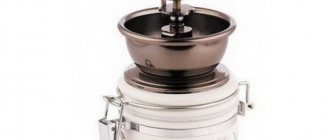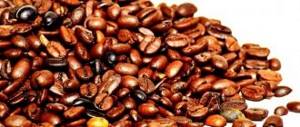Sweden: 8.2 kg per capita
In Sweden there is such a thing as “fika”, which literally means “to drink coffee”.
Various sweets or baked goods are also allowed. This concept can include a variety of situations - from a break at work to a gathering of friends.
Of course, you can drink coffee alone at home, but more often this drink becomes part of social interaction.
Rating of leading coffee countries in 2018
Canada
Among non-European countries, Canada drinks the most coffee. Each of the 37 million Canadians consumes 6.5 kg of grains per year.
Chain catering places are common here, where you can order a glass of aromatic drink. There are small coffee shops. Canadians also enjoy cocktails at home. Perhaps it's all about the cold down to -35 degrees. Although Canadian residents claim that this is a tradition.
Interesting! Calorie content of coffee with milk, sugar and other additives for different volumes
Luxembourg
In terms of the amount of grains per person per year, residents of Luxembourg caught up with Canadians - 6.5 kg. And this despite the fact that 590,667 people live in the country (as of January 2021).
Luxembourg's 2,586.4 square kilometers are home to many coffee shops and street coffee machines.

Belgium
Residents of Belgium are famous for their national waffles and beer. But they also love chocolate and drink coffee. There are 6.8 kg of grains per Belgian per year. The main suppliers are Congo and Rwanda.
Switzerland
Filter coffee is not popular in Switzerland. Espresso and drinks based on it are popular. Each Swiss consumes up to 7.9 kg per year. And the high cost of a portion of 3.5 dollars does not become an obstacle.
Sweden
For Swedish residents, coffee with fresh baked goods or other sweets is an integral part of life. Swedes enjoy it in public places, in a homely atmosphere and call it “fika”.
Consumption comes down to 8.2 kg per Swede.
Netherlands
The Dutch are the first Europeans to grow coffee trees. Thanks to this, Holland has become one of the major suppliers of grains to Europe. Find out more in the article “Where Coffee Really Grows.”
The most popular places in the south of the Netherlands are places where coffee cocktails are served together with the sweet vlaaj cake. Modest northerners drink it only with cookies. One Dutch person consumes 8.4 kg per year.
Denmark
In Denmark, coffee is revered and considered one of the main non-alcoholic drinks, especially at celebrations. During a simple snack, it is traditionally served at the end of the meal. For cooking, the Danes make teapots called bodum.
Each Danish resident uses 8.7 kg of grain per year and drinks the drink with sweets or sandwiches.
Interesting! At what age can children drink coffee, its effect on the body

Iceland
In Iceland, there are large and small cafes in every city. This is how Icelanders create comfort for themselves when the temperature around them is no more than 10 degrees Celsius.
In Iceland, competitions between baristas in preparing lattes with designs on the foam are popular. Coffee consumption per capita reaches 9 kg per year.

Norway
When Norway was a colony of Denmark, coffee was cheap and could be afforded by many. The situation has not changed to this day. Norwegians eat their favorite delicacy with desserts and pies, consuming up to 9.9 kg per year.
A popular cocktail in Norway is called karsk. It is weakly brewed and combined with vodka or local moonshine. When they want to reduce the strength, the liquid is set on fire to burn off some of the alcohol.

Finland
Finland took 1st place. More coffee is drunk here than in the rest of the world. Every year, one Finn produces up to 12 kg of grains.
For Finns, drinking hot coffee is the meaning of communication and weakness. And so serious that doctors classify it as an unhealthy habit. It accompanies any conversation during the day; snacks include sandwiches, pastries, and cakes.
For brewing, Finns use the Turkish version - they bring water and grounds to a boil in a Turkish pot. They roast the grains lightly, so the drink turns out the same. Nowhere else in the world do they drink like this.

Iceland: 9 kg per capita

Icelanders are also among those who drink the most coffee. On average, an Icelander drinks up to 5 cups of coffee a day.
The capital of Iceland does not have large coffee chains such as Starbucks or Second Cup, but there are many small coffee shops that brew the best quality coffee.
Which countries drink the most coffee?
South America produces the most coffee beans, but the most devoted fans of the wonderful drink live in northern Europe. Coffee consumption per capita in the world is growing every year. At the same time, for several decades, not a single country producing an aromatic product has been included in the top 10.
The ranking shows coffee consumption by countries with the highest rates per person. Therefore, the United States, importing over 45 million bags of grain (2.7 million tons), is only at the end of the second ten.

The article presents statistics from the International Coffee Organization (ICO). The number of kilograms of goods per resident of the country is indicated. The actual consumption by coffee lovers is higher, since the entire population of the country was taken into account.
1st place – Finland (12 kg)
Finland ranks first in coffee consumption, importing grain mainly from Colombia and Brazil. Local residents explain their love for the tonic drink by the peculiarities of natural conditions: in a country with short daylight hours, cold and winds, it is pleasant to invigorate yourself with a cup of hot kahvi.
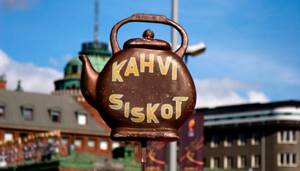
The Finns became acquainted with coffee in the 18th century. It was only at the end of the 19th century that this product became available to everyone, when Gustav Paulig organized delivery and built the first roasting plant.
- This is interesting: Who brought coffee to Europe
Locals drink coffee not only in the morning, but throughout the day. There is no excess of caffeine in the body, because the strength is small. Finns prefer low roasting (1 or 2 levels), so the taste is mild. Kahvi in Finnish resembles Americano, but no additives are recognized. Sometimes an exception is made for small amounts of milk and sugar. Espresso, cappuccino, latte and other recipes are not popular.
A coffee grinder is a must-have attribute in every kitchen, as people here love natural, not instant, products. Common varieties are Juhla Mokka and Presidentti.
Not a single meeting of friends or business partners is complete without a cup of aromatic kahvi: drinking coffee here is part of a long-standing tradition. Even employment contracts stipulate coffee breaks. You can also try Finnish-made products in the CIS countries: many are familiar with the oldest national brand Paulig.
2nd place – Norway (9.9 kg)
Norway imports over 40 thousand tons of raw materials. For 90% of the adult population, this is their favorite drink, which they prepare 4-5 times a day. Like the Finns, Norwegians brew weak coffee from light-roasted beans.
Worldwide requests and offers
As of 2021, the market structure has changed dramatically. If you look back at 2001, you will notice the following trends:
- Compared to 2001, in 2021 the demand for instant products has decreased. This is explained by rising wages among Russians, as well as effective advertising and the proven benefits of grain. If in 2001 a survey showed that 86% of respondents prefer instant drinks, while the same figure has now dropped to 49% and continues to decline.
- In 2021, the approximate consumption figure for this delicacy in Russia was 250,000 tons, and it also continues to rise.
- There are about 2 kilograms of these products per year per citizen.
- The record holders for drinking are citizens of Finland and Denmark, where the consumption of the drink per year per person is 12 kilograms! This figure in Europe is slightly less - only 8 kg per person, which is also much more than in Russia.
- Russian grain lovers are also divided into two groups: 37% of Russians buy grain, and the rest buy already ground grains.
- Since the coffee market in Russia is only growing, our citizens have become better aware of the varieties of beans, as well as the countries that produce them.
- A survey conducted in 2021 in Moscow showed that: 90% prefer the drink for breakfast, 45% during the day, in the evening the figure drops to 20%, and at night 3-5% of respondents drink this product.
- According to the same survey, Muscovites prefer to prepare the drink at home (95%), some drink the drink at work (45%), the rest buy a treat in a cafe (20%), another small group prefers to treat their guests (19%). At the same time, a considerable part of people take a glass with them when they go for a walk (10%).
Mexico
The favorite drink of Mexicans is Cafe de Olla. He has several secrets. Firstly, this coffee is brewed over very low heat. Secondly, during the cooking process, a cinnamon stick is dipped into the boiling liquid for aroma and taste. Thirdly, the drink is sweetened with cane sugar, which gives the bouquet caramel notes. And, fourthly, they pour coffee into clay cups - Mexicans believe that only natural material can reveal the fullness of the taste.
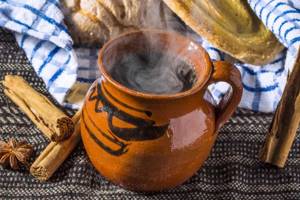
Coffee consumption in the USSR
After the revolution, the end of the world war and the civil war, the economic situation in Russia was deplorable, and the population became greatly impoverished . The decline in living standards and the state monopoly on the coffee trade (since 1918) led to a reduction in imports to almost zero (5 tons in 1920). New Economic Policy of the 1920s (NEP), which replaced War Communism, partially returned the market economy to the sphere of trade and public catering. During the NEP period, coffee imports increased from 0.2 thousand tons to 1.4 thousand tons.
Stalin's coffee shortage
Under Stalin in the 1930-50s, the consumption (import) of coffee practically did not change and remained at the level of 0.5-1.2 thousand tons per year, which is tens of times lower than 1913. Import of coffee, in contrast to foreign equipment for speeding up industrialization was not a priority when spending limited foreign currency. It was mainly the wealthy nomenklatura and elite, as well as the military, who could afford to buy or receive coffee. Most of the population preferred to drink tea.
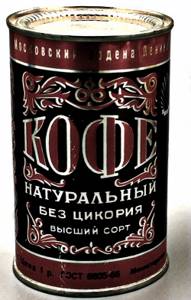
Coffee in the USSR
Soviet professor D. Mishustin wrote about this in 1938, explaining the problems with importing coffee (and not only) into the USSR:
We will not talk about importing products such as coffee, fruits, spices, or about shoes, clothing, silk fabrics, etc. All these are necessary goods. Of course, these goods imported by Tsarist Russia were not consumed by workers and peasants, but mainly by the bourgeoisie and landowners.
Khrushchev's coffee thaw
During the Khrushchev period, the popularity of coffee increased sharply and by 1965 its imports increased to 26 thousand tons, or 20 times compared to the early 1950s. It took the Soviet government almost 50 years (late 1950s) to catch up with Tsarist Russia in 1913 in per capita coffee consumption. By the mid-1960s. coffee consumption was 115 grams per year per person. As the quality of life improves, coffee becomes available to more people , and a culture of drinking the invigorating drink is gradually being formed.
But comparison with developed countries shows a big difference in coffee consumption between Soviet citizens and residents of Western countries. In the largest European countries - Germany and France - people drink 30 times more coffee, and even in the UK, where tea is traditionally preferred, the difference is 8 times.
Coffee consumption per capita in 1965 in the USSR and countries of the world. Source: author’s calculations based on UN FAO data
Brezhnev's coffee stagnation
During the early years of Brezhnev's rule, coffee consumption in the USSR continued to grow. Coffee was purchased from India, Brazil, Colombia, Ethiopia, Vietnam, Angola and other countries in Africa, Asia and Latin America. Imports often depended on political relations between countries, and coffee was supplied in exchange for economic and military assistance from the USSR . By the beginning of the “stagnation”, coffee was actively spreading throughout the country; people began to drink it not only in large cities, but also in small towns. This is facilitated by cinema (including foreign), television and the media - through them a culture of consumption is instilled, as well as an increase in the well-being of the population.
Indian coffee in the USSR
The limiting factor for wider distribution was the relatively high price compared to the cheap and familiar tea . From the mid-1970s until the collapse of the USSR, coffee imports fluctuated between 50-100 thousand tons per year, and per capita consumption was 200 grams. The gap with developed countries decreased, but was still high.
Coffee consumption per capita 1975-1990 in the USSR and countries of the world. Source: author’s calculations based on UN FAO data
Coffee quality in the USSR
The quality of coffee in the USSR was often mediocre , and some types were in short supply . If green, roasted and ground coffee were available (mostly) on the open market (including by weight), it was not easy to get instant coffee. Coffee roasting was carried out in ovens that were inferior in quality to developed countries (although some of the equipment was from Western Europe), and self-roasting of coffee beans at home was also common. Among the popular types of ground and instant coffee, the following stood out: imported Indian coffee - “Indian instant coffee”, coffee from Moscow , Rostov and other food factories.
Soviet-made coffee
Better quality coffee was sold in currency and certificate (check) stores (for example, Beryozka), but most people did not have the opportunity to purchase products in such stores. In addition to traditional coffee beans and ground coffee, Soviet stores sold drinks with limited coffee content and the addition of chestnuts, chicory , etc. The coffee content in some “coffee drinks” could be as low as zero.
Brezhnev always started his day with coffee
